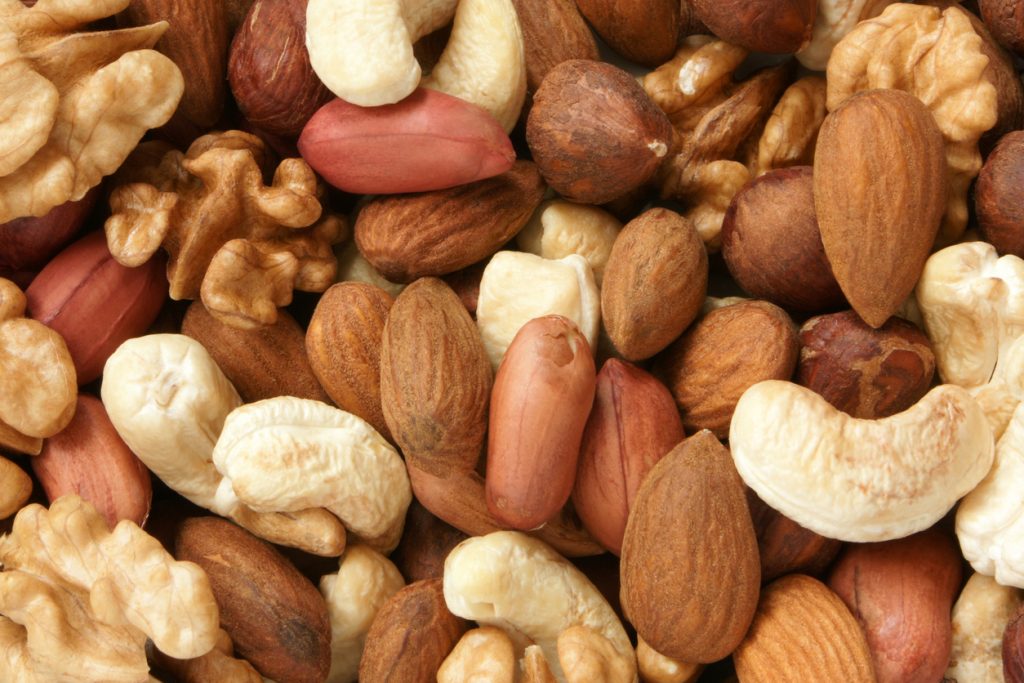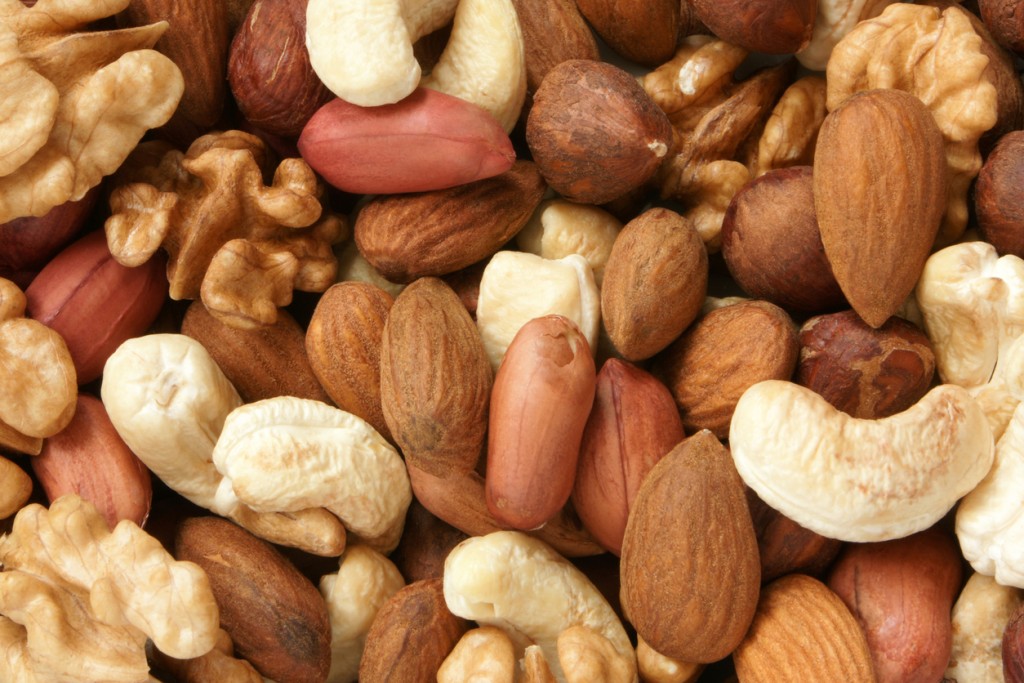Warning: This article full of nut trivia may contain nuts.
- Until the mid-20th century, hazelnuts were called filberts. That name is likely a corruption of the name of St. Philibert, whose feast day of August 20 coincides with the day filberts (okay, hazelnuts) start to ripen in western Europe.
- Five states have an official “state nut.” In California it’s the almond, in Oregon it’s the hazelnut, in Ohio it’s the buckeye, and for Alabama and Texas it’s the pecan.
- Raw cashews come concealed in a double shell which contains a resin called urushiol. It’s toxic to consume, but the resin is used to make brake liners and auto paint.
- Two Russian legends surrounding pistachios: 1) Anyone who hears a stranger cracking open a pistachio will soon have good luck. 2) If you wrap two pistachios in red silk and hide them someplace safe, love will come to your family.
- Only two nuts mentioned in the Bible: almonds (twice) and pistachios (once).
- It takes about 540 peanuts to make a 12-ounce jar of peanut butter. That works out to out 18 peanuts in a peanut butter and jelly sandwich.
- Two-thirds of all nuts consumed in the U.S. in all of their forms are peanuts. Almonds are next at 13 percent, followed by pecans at 4 percent.
- Nutritionally, peanuts resemble nuts, but they’re technically legumes (like beans or peas) because they grow underground, in pods. Most other nuts grow on trees.
- 40 percent of the world’s almond crop goes into chocolate products.
- Most nuts are picked at the point of ripeness, but macadamia nuts are much easier to harvest. They’re ready to eat when they fall off of the tree.
- The country that produces more than half of all Brazil nuts: Bolivia.
- Brazil nut trees grow wild and cannot be cultivation. Only one kind of bee can pollinate them, and to do a single type of orchid must be present.
- The only known sexually transmitted allergic reaction: a Brazil nut allergy.
- Coco de mer, also called the sea coconut, is the world’s largest seed, and nut. It’s found only in the Seychelles islands, and they’re the same size—and shape—of a human’s hindquarters.
- Scientists aren’t sure why, but peanut allergies in American children have tripled in the last 20 years. In 1997, 0.4 percent of kids were allergic to peanuts (and tree nuts), and today, more than 1.4 percent are.









